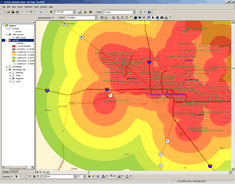| 1. Community Access to school recreational facilities (playing fields ~ playgrounds)? |
| 2. Community use of buildings for public meetings? |
| 3. Community use related to auto traffic on campus? |
| 4. Community use related to foot traffic on campus? |
| 5. Campus crime related to community use? |
| 6. Student discipline issues related to community use? |
| 7. Does the community consider the school a benefit? |
| 8. Does the community use the school in promotional campaigns aimed attracting new business investments? |
| 9. Do new residents report that the school was on of the reasons they moved into the community? |
| 10. Do real estate brokers report that homes have increased in value because of the school/park complex? |
| 11. Do elements of the community hospitality industry report an increased volume of business because of the presence of the school/park complex? |
| 12. Do public safety officials report that there has been an increase/decrease in major accidents as a result of the school/park complex? |
| 13. Do public safety officials report that there has been an increase in traffic on local roads because of the presence on the school/park complex? |
| 14. Do home insurers report increased home values because of the school/park complex? |
| 15. Do home insurers report an increase in claims for burglaries and break-ins following the establishment of the school/park complex. |
| 16. Does the county tax assessorís office report increased revenues from the area following the establishment of the school/park complex? |
| 17. Has the rate of issuance of new building permits increased in the wake of the School/Park complex? |
| 18. Has the rate of issuance of new business permits for the community area increased in the wake of the school/park complex. |



